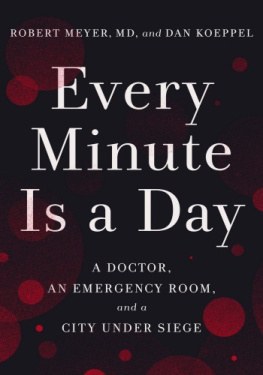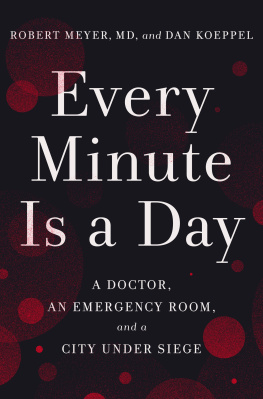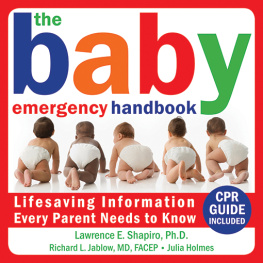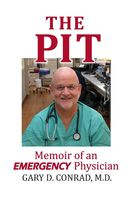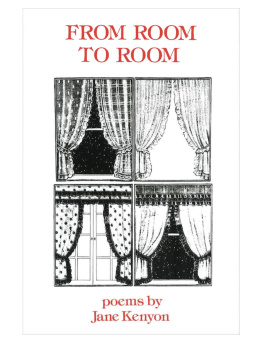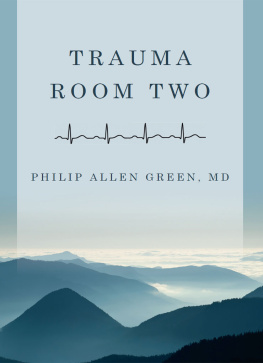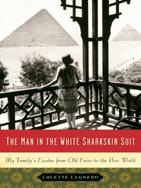I have intentionally altered some details in this manuscript, particularly identifying details concerning patients, colleagues, various hospitals, and other locations. While names and dates may have been changed, the human experience at the center of this story is true and unfolded as described.
To the truth tellers and the truth seekers; to those who live honestly now and to the others who will one day; and last, but not least, to those courageous enough to love in a way that only creates freedom
INTRODUCTION
God breaks the heart again and again and again until it stays open.
HAZRAT INAYAT KHAN
As I cradled my patients head in my hands, I looked past the watery wells of his eyes. For a moment, I didnt notice the blood that ran in rivulets across my gloves as it poured from his scalp, or the bits of gray and white brain matter that dotted the sheets. The beeping of the monitors around me, the popping sound of IV catheter tops being flicked off by nurses, the screeching of wheels as equipment was dragged across linoleum floors, the nurses and techs yelling directions at one another, the stifled gasps erupting from the two medical students on their first ER shift attempting in vain not to be startledall were drowned out as I stood over this young man and tried to ease his agitation.
This is the part of being a doctor that medical school doesnt cover, that case reviews dont prepare you for. This is the part you cant really know until youre in the moment: You are the person responsible for saving the human life that slowly slips through your fingers while silently begging for final redemption under the demanding fluorescent lights.
I am the doctor whose palms bolster the head of the twenty-year-old man with a gunshot wound to his brain. I support the baby as she takes her first breath outside her mothers womb. I hug the wife whose husband is dying from advanced liver disease as she implores the universe to take away his pain.
I claim no special powers; nor do I know how to handle death any better than you. What I know is that for thirty-six hours a week, I reside in the melee that is a hospital emergency room, where I am called upon to be salve, antidote, and sometimes Charon. Most of the time my job is to keep death at bay. When I am successful, I send the patient back out into the world. When Im not, I am there as life passes away.
Im not so deluded as to think that I alone am capable of making that kind of difference. Im well aware that the determination of who lives and who dies doesnt happen at my hands alone. There are times when, despite the designs of any patient, family member, friend, or doctor, death will come. Then I am witness. What I can do is be the ferrywoman who holds the body as the last breath escapes, the one who, like the night sentinel, calls out the hour and does her best to convey that all is well.
Like everyone, I am in this world for only a brief time. And as for many, blessings abound in my life, and they abound amid the struggle, amid my struggle. Over the decades Ive learned to cultivate a personal state of stillness. As a child, that stillness grew from a dissociation I stumbled upon that allowed me to better endure life with a father who was a batterer and with a family legacy of victimhood. As a black woman, I navigate an American landscape that claims to be post-racial when every waking moment reveals the contrary, an American landscape that requires all women to pound tenaciously against the proverbial glass ceiling, which weve since discovered is made of palladium, the kind of glass that would sooner bow than shatter.
When I began writing this book, I had started over. My marriage to my college sweetheart had ended. I had moved to a new city to start a new job. Plagued with doubt, I found myself having to reevaluate my life. Living through such changes was difficult; now I see those junctures, when everything I had counted on came to an abrupt end, as a privilege. They gave me the opportunity to be uncertain. And in that uncertainty grew opportunity.
From childhood to now, I have been broken many times. I suspect most people have. In practicing the Japanese art of Kintsukuroi, one repairs broken pottery by filling in the cracks with gold, silver, or platinum. The choice to highlight the breaks with precious metals not only acknowledges them, but also pays tribute to the vessel that has been torn apart by the mutability of life. The previously broken object is considered more beautiful for its imperfections. In life, too, even greater brilliance can be found after the mending.
As an emergency medicine physician, I know how to be still for others. I know how to call down the gods of repose and silence, to take the measure of their power in the moments when I need it most. This stillness I inhabit as I pause, push, breathe, and grow.
The stories I tell here will, I hope, take you into the chaos of emergency medicine and show you where the center is. This center is where we find the sturdy roots of insight that cant be windthrown by passing storms. In their grounding they offer nourishment that can, should we allow it, lead to lives of ever-increasing growth. I had to find this center for myself as I took stock of experiences that were exceedingly painful yet that ultimately filled me with the promise of a meaningful rebirth, a rebirth that is worth the surviving, worth the healing, worth the repair.
ONE
Michele: A Wing and a Prayer
I am seven and a half. I am bathed in a quiet punctuated only by the rhythmic upsweeping whistle of the northern cardinals song. Its almost never like this, but right now the only sound emerging from our three-bedroom Colonial is the refrigerators hum. No one is screaming or yelling, no one is punching, no one is being hit, no piece of furniture has toppled to the floor. Today there are no new bruises and no new scars. It is Saturday afternoon and it is absolutely tranquil: My brother, sister, and father are out. My mother is down the hall in her room.


